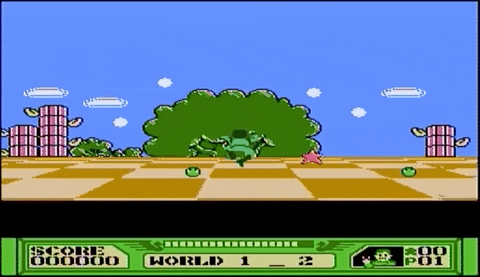Poll Results
/Over the past week, we’ve made posts looking into the history of several topics based on the results of a poll we conducted. As promised, here are the full results! We asked a total of eight questions, and then chose five of them to look into for our posts.
Note that we’ve removed joke answers and “N/A” answers from these results, so if you notice a question has less responses than another, that’s why.
Who is the first video game character you can think of? (Results were used for this post!)
WINNER: Mario (Super Mario) - 10 votes
Link (The Legend of Zelda) - 5 votes
Commander Shepherd - 1 vote
Dragonborn (Skyrim) - 1 vote
Henry Stein (Bendy and the Ink Machine) - 1 vote
Kirby (Kirby) - 1 vote
Makoto Niijima (Persona) - 1 vote
Master Chief (Halo) - 1 vote
Ratchet (Ratchet and Clank) - 1 vote
Roxas (Kingdom Hearts) - 1 vote
Sans (Undertale) - 1 vote
Sonic (Sonic the Hedgehog)- 1 vote
Sora (Kingdom Hearts) - 1 vote
Spyro (Spyro) - 1 vote
Zelda (The Legend of Zelda) - 1 vote
What is the first video game franchise you can think of?
WINNER: Mario - 8 votes
The Legend of Zelda - 4 votes
Halo - 2 votes
Kingdom Hearts - 2 votes
Pokémon - 2 votes
Call of Duty - 1 vote
Civilization - 1 vote
The Elder Scrolls - 1 vote
Half-Life - 1 vote
League of Legends - 1 vote
Luigi’s Mansion - 1 vote
Mass Effect - 1 vote
Persona - 1 vote
Super Smash Bros. - 1 vote
Undertale - 1 vote
What is the first video game console you can think of? (Results were used for this post!)
WINNER: Nintendo 64 - 5 votes
Nintendo Switch - 4 votes
PlayStation - 4 votes
Xbox 360 - 4 votes
GameCube - 2 votes
Xbox - 2 votes
Nintendo Entertainment System - 1 vote
PC - 1 vote
PlayStation 2 - 1 vote
PlayStation 3 - 1 vote
PlayStation 4 - 1 vote
Super Nintendo Entertainment System - 1 vote
“Nintendo” - 1 vote
What is the first video game company you can think of? (Results were used for this post!)
WINNER: Nintendo - 14 votes
Sony - 3 votes
Blizzard - 2 votes
Activision - 1 vote
Atlus - 1 vote
Bethesda - 1 vote
Bioware - 1 vote
EA - 1 vote
Microsoft - 1 vote
Naughty Dog - 1 vote
Sega - 1 vote
Ubisoft - 1 vote
What's the first video game genre you can think of?
WINNER: Platformer - 6 votes
FPS - 3 votes
RPG - 3 votes
Shooter - 3 votes
Horror - 2 votes
RTS - 2 votes
Action - 1 vote
Action RPG - 1 vote
Adventure - 1 vote
Battle - 1 vote
Children’s - 1 vote
Fantasy - 1 vote
MMORPG - 1 vote
Stealth - 1 vote
Survival Horror - 1 vote
What is the first video game soundtrack you can think of? (Results were used for this post!)
TIED WINNER: Kingdom Hearts - 3 votes
TIED WINNER: Undertale - 3 votes
Bastion - 2 votes
Mario - 2 votes
Bendy and the Ink Machine - 1 vote
Bloodborne - 1 vote
Cyberpunk - 1 vote
Cyberpunk 2077 - 1 vote
Dearly Beloved (song from Kingdom Hearts) - 1 vote
Flower - 1 vote
Halo 3 - 1 vote
The Legend of Zelda - 1 vote
The Legend of Zelda: Ocarina of Time - 1 vote
Luigi’s Mansion - 1 vote
Mario theme (song from Super Mario) - 1 vote
NBA2K - 1 vote
Pokémon Ruby and Sapphire - 1 vote
Red Dead Redemption 2 - 1 vote
Sims - 1 vote
Super Smash Bros. - 1 vote
Wii Sports - 1 vote
What's the best game ever made?
TIED WINNER: Baldur’s Gate 3 - 3 votes
TIED WINNER: Minecraft - 3 votes
TIED WINNER: The Witcher 3 - 3 votes
The Last of Us - 2 votes
Bioshock (original) - 1 vote
Doom Eternal - 1 vote
Elden Ring - 1 vote
God of War (2018) - 1 vote
In Death - 1 vote
Kingdom Hearts II - 1 vote
The Legend of Zelda: Ocarina of Time - 1 vote
Super Mario Bros. 2 - 1 vote
Super Mario Odyssey - 1 vote
Mario & Sonic at The Olympic Games - 1 vote
Mass Effect - 1 vote
Paper Mario (64) - 1 vote
Red Dead Redemption 2 - 1 vote
Sudoku - 1 vote
Tetris - 1 vote
What's the worst game ever made? (Results were used for this post!)
WINNER (LOSER…?): League of Legends - 3 votes
E.T. - 2 votes
Superman 64 - 2 votes
Banjo-Kazooie - 1 vote
Bear and Breakfast - 1 vote
Call of Duty: Cold War - 1 vote
Candy Crush - 1 vote
Command and Conquer 4 - 1 vote
Destiny 2 - 1 vote
Diablo Immortal - 1 vote
EA’s Battlefront - 1 vote
The Elder Scrolls V: Skyrim - 1 vote
FIFA/EA FC 24 - 1 vote
Flappy Bird - 1 vote
Fortnite - 1 vote
Frogger - 1 vote
Getting Over It with Bennett Foddy - 1 vote
Happy Feet Two - 1 vote
King Kong 2023 - 1 vote
Megamania (Atari 2600) - 1 vote
YIIK: A Postmodern RPG - 1 vote
-
Thanks to everyone who participated in the poll!
Wesley Naylor is a second-year student of the Professional Writing program who thinks games are rather neat! He likes learning about what goes into the development of games and seeing how they’ve evolved over time.
He also likes writing... and on this blog, he can combine those interests, just for you!














